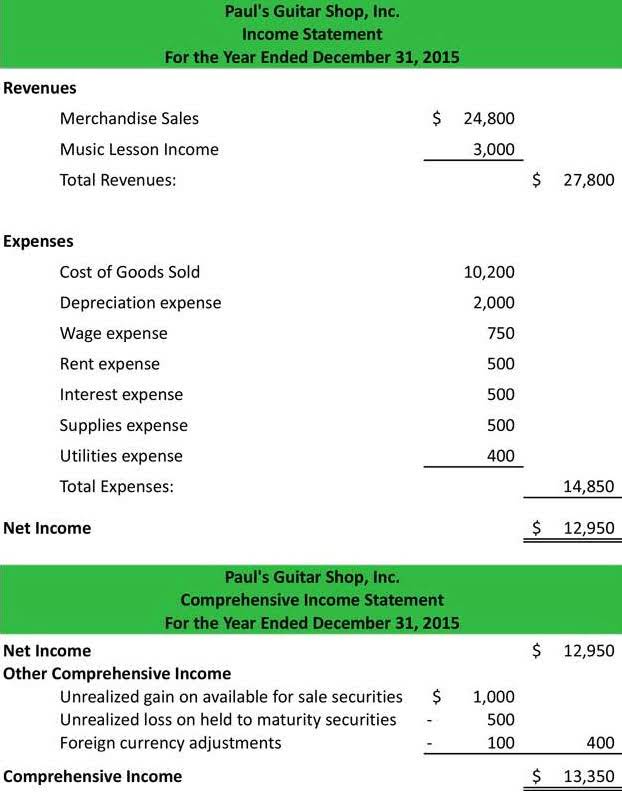
Managing accounts payable is crucial for maintaining good relationships with suppliers while keeping track of cash flows and minimizing financial risks. It is important to have an efficient procurement process that ensures timely payments without missing out on potential discounts. Firstly, accounts payable fall under the category of expenses in the income statement.

Why You Can Trust Finance Strategists

A sub-ledger consists of the details of all individual transactions of a specific account like accounts payable, accounts receivable, or fixed assets. The total of all these individual transactions can then be recorded in the general ledger. If you are using manual accounting software, then you will have to review the due date of each of the invoices, so you know which invoices are due for payment. Once you’ve reviewed all the invoices, the next step is to process those payments. The Income Statement gives income statement accounts an overview of a company’s financial health at any given point in time. Understanding this document can help businesses make informed decisions about future investments and strategies to improve their bottom line.
The Complete Guide to Online Procurement Systems

While preparing Partnership Accounting an income statement, many accountants and bookkeepers wonder whether accounts payable is included in the statement. In this article, we will delve into the answer and explore the significance of accounts payable on the income statement. The short answer to this question is no, accounts payable is not reported on the income statement. The income statement, also known as the profit and loss statement, is a financial statement that shows a company’s revenues and expenses over a specific period of time, typically a month, quarter, or year. Accounts payable and the income statement are two important aspects of a company’s financial management.
- Therefore, the AP account appears under the current liabilities section of the balance sheet of a company.
- The term accounts receivable, on the other hand, refers to money owed to a company for unpaid goods and services that were already delivered.
- By implementing effective procurement strategies and keeping track of outstanding debts, companies can ensure healthy cash flow management while maintaining positive relationships with their suppliers.
- Stated in simple terms, accounts payable represents a current liability that measures the unmet payment obligations still owed to suppliers and vendors by a particular company.
- It is important to pay close attention to your AP expenditures and maintain internal controls to protect your cash and assets and avoid paying for inaccurate invoices.
- This can be done by generating reports like the ‘Accounts Payable Aging Summary’ report or the ‘Accounts Payable Aging Detail’ report.
Checking and Filling Invoice Details
- Whether you’re an accounting student, a recent college grad, or a small business owner, you may have questions about what accounts payable is, how it works, and best practices.
- Despite the two terms being used interchangeably, trade payables and accounts payable do not have the same meaning.
- The payments owed by the business are expected to be issued soon after the issuance of the invoice from the perspective of suppliers and vendors.
- The total of all these individual transactions can then be recorded in the general ledger.
- Sufficient operating procedures are extremely important to reduce improper payments, ensure regulatory compliance, and reduce the risk of human error.
The accounts payable is recorded as a separate line item on the cash flow statement as well. Based on the company’s latest financial statements, a total of $200 million was incurred in cost of goods sold (COGS) in Year 0. income summary In practice, the days payable outstanding (DPO)—or “AP Days”—is the most common operating driver to project the accounts payable of a company in a pro forma financial model. The days payable outstanding (DPO) measures the number of days it takes for a company to complete a cash payment post-delivery of the product or service from the supplier or vendor. Therefore, an increase in accounts payable is reflected as an “inflow” of cash on the cash flow statement, while a decrease in accounts payable is shown as an “outflow” of cash.

Is accounts payable a debit or credit entry?
- The basic way to find where an account appears is to distinguish whether it is a liability or an expense account.
- A successful accounts payable team would arrange effective supplier relationships.
- Therefore, accounts payable is classified in the current liabilities section of the balance sheet, as the accumulation of unfulfilled payment obligations imply a future “outflow” of cash.
- Liability accounts include interest owed on loans from creditors—known as interest payable, as well as any tax obligations accumulated by a company, which are known as taxes payable.
- Upon receipt of an invoice, the company records a “credit” in the accounts payable account with a corresponding “debit” in the expense account.
Our work has been directly cited by organizations including Entrepreneur, Business Insider, Investopedia, Forbes, CNBC, and many others. At Finance Strategists, we partner with financial experts to ensure the accuracy of our financial content. For example, consider the case of an air ticket invoice for business travel sold to a company that makes widgets. You’ll also need to include certain clauses in the supplier contract relating to penalizing suppliers, this is in case of non-performance or underperformance. Let’s consider the above example again to understand how to record accounts receivable.
What is the difference between accounts receivable and accounts payable?
Investors often use the income statement to assess whether a company is profitable or not. A positive net income indicates profitability while negative numbers suggest losses. Delve into the complexities of the evolving tax landscape and political shifts impacting your firm. Understanding the implications of these shifts is crucial for every tax professional as we navigate through these transformative times. You can use Accounting CS Client Access to offer a completely new way to work with your business clients in real time, so you can provide more timely responses and consultative advice. This real-time collaboration eliminates version conflicts, software updates, security loopholes, imports, exports, and other inefficiencies.
